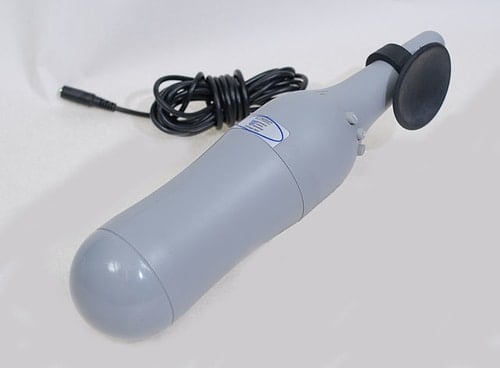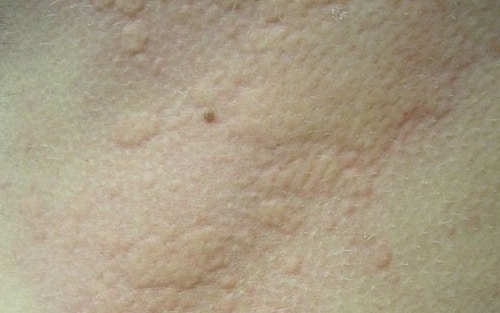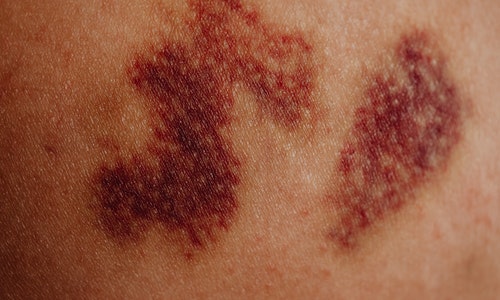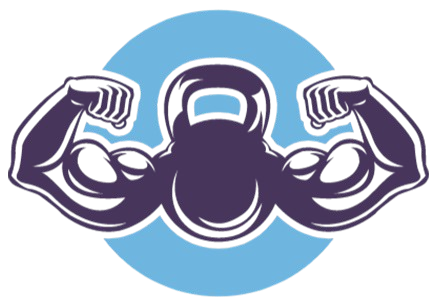Fitpro Income
Are Massage Guns Safe To Use On Skin?
Ok, so you’ve been told how wonderful massage guns are and all of the fantastic benefits they can provide, from improved blood circulation to enhanced recovery after exercise, plus they just feel really good.
But when you’re using one, you’re getting a bunch of problems with your skin right? So what’s going on?
Today, I’m going to be answering the question “are massage guns safe to use on skin” so you can completely understand what’s going on.
Sound good?
Let’s go…

The reason you’ve chosen to find out about this is almost certainly because after using a massage gun, you’ve had some sort of skin irritation or painful experience.
The good news is that there are usually pretty simple explanations as to why these skin conditions occur after using a massage gun.
Here are some of the most common we find occur after using a massage gun:
- Hives
- Itching
- Bruising and tenderness
- Redness and inflammation
- Overstretched skin
This doesn’t make for a great sales pitch for muscle guns, but very few people actually suffer from issues caused by them.
The majority of the time it can be put down to simple overuse or misunderstanding of how to use the product.
Let’s take a closer look at some of the conditions they can cause, and why they can cause them.
Hives

What are hives?
“Hives” is an itchy rash that occurs on the skin, that appears as raised red blotches.
The condition usually heals in time and needs no further treatment, but in severe cases, it may require further medical assistance.
How do massage guns cause hives?
In the majority of cases, it won’t be the massage gun itself that causes a breakout of hives.
It’s common to use essential oils when using a massage gun, so it’s more probable that you have had a reaction to the oil itself, rather than the action of the massage gun itself.
In rare cases, however, an increased blood flow to the area being massaged can stimulate hormone release which can cause an inflammatory response to the area.
This would create feelings of heat, itching, and redness, which are the main symptoms of hives.
Why does my skin itch after using a massage gun?
Similar to the above, it’s coming for people to have a light inflammatory response to percussion massage.
In some cases, the area by not break out into hives, but, instead, may only present itself as an itchy area of skin where the massaging took place.
Another cause of an itchy sensation to the skin after a massage is tiny muscle spasms that are caused by high levels of vibration (the exact purpose of a percussion massage gun).
The spasm can affect the surrounding nerves which In turn, cause an itching sensation to the skin above.
Vibratory urticaria
In rare cases, vibratory urticaria can be the culprit that’s causing your skin to itch after using a massage gun. These are also called (vibratory hives).
For some people, a constant motion (like running) or rubbing against the skin can cause the same histamine response in the body we described above.
The release of this hormone initiates an inflammatory response to the area being massaged, which causes itching. In this case, simple over-the-counter antihistamines can reduce itching and redness.
Bruising and tenderness

It’s very common for people to overdo massage gun use. An inexperienced user might feel they need to press down hard on the massage gun or to use it for longer periods of time than recommended in order to get “better” results.
This is completely unnecessary, as gently pressing the massager against the skin or clothing is more than sufficient to reap the benefits.
Overuse or pressing down hard into the muscle can cause bruising and tenderness.
If this has occurred, it’s best to rest the area to let it heal completely before trying to massage it again, as further use will only increasing the bruising and healing time.
Overstretched skin
Ironically, overuse of a massage gun can make the appearance of your skin worse, rather than improving its tone and tightness.
If used correctly, a massage gun can increase the blood flow to the area of the skin you want to treat, which can help certain skin conditions. But, when overused, the constant stretching back and forth of the skin can damage the collagen (a protein), which is what gives your skin its stretchy nature.
Over time, constantly damaging the collagen of the skin will cause it to become looser, which in turn can cause wrinkles and dimples.
Massage gun on skin or clothes?
Taking everything we have discussed so far into account, should you use a massage gun directly on your skin, or should you wear clothes to protect yourself?
The answer is simple, if you find you’re getting rashes from using a massage gun, it may be worthwhile trying it through clothing to see if that provides any relief. Although the majority of people will be fine to use them on bare skin.
You do not need to worry about the massage being less effective through clothing, as the vibrations will pass through into the skin just as easily. If you’re looking for a truly deep muscle tissue massage, thick clothing may dampen the effects slightly, but if the goal is to treat skin conditions, it’s perfectly fine to wear clothing.
Are massage guns safe to use?
As a general rule, massage guns are safe if you use the product correctly. There is no need to press down hard against the skin when using, and they should not be used more frequently or for longer than the manufacturer intended. Overuse can cause redness, itching, and localized tenderness.
Ok, so after speaking about the negative effects and conditions that a massage gun can cause, you might start thinking they aren’t such a good idea.
The truth is that, in the majority of cases, people use massage guns on a regular basis with little to no discomfort or issue at all.
If you have read the above information, you will see that the main reasons that people have medical issues after using them come down to either, overuse, incorrect use, or genetic predisposition to skin irritation.
This means that in all likelihood, you should be fine to pick up a massage gun and start using one, as long as you don’t get too excited and start using it for an hour each day, that’s a sure-fire way to end up injuring yourself!
Previous injuries
Much as most people won’t find an issue with using a massage gun (or muscle gun as they’re sometimes called), there are a few specific circumstances where you should absolutely avoid using one.
If you have any kind of recent injury, massaging the area (especially with a gun) is likely to cause more aggravation to the area and impede the healing process.
Increasing blood flow to an injured area is the bodies own way of starting the healing process, it does not need any outside assistance, so if you’re injured, let it rest, heal, and when you’re sure you are fully recovered, then, you can start to use your massage gun again, but certainly not before this point.
Here is a short list of conditions where you should absolutely not be using a muscle gun.
- Broken skin
- Burns (sunburn etc)
- Pulled muscles (strains)
- Ligament damage (sprains)
Broken skin
Broken skin tissue needs time to heal on its own, without interruption or interference. Massaging this area may seem like a good idea, but you are far more likely to further damage the area and increase the healing time.
Burns (sunburn etc)
Unlike broken skin, burns need cooling, pain medication, moisturization, water, and plenty of time to heal. In more extreme cases, they may also require further medical attention.
In no way would a massage gun be beneficial to this condition, and so you should not even consider trying to use one to speed up the healing.
Pulled muscles (strains)
The procedure to treat a strained muscle (or a pulled muscle), is to apply the “R.I.C.E”, principal, rest, ice, compression, and elevation.
Over-the-counter pain medications may be used to help with easing the pain caused by the strain, and again, of course, the final piece of the puzzle is to rest the area and give it plenty of time to heal.
Massaging a sprained muscle is likely to cause even greater damage to the fibers, only adding to your healing time and increasing the pain you’re feeling.
Ligament damage
Ligament damage is usually more serious of a condition than a muscular strain, as ligaments receive less blood flow than muscles. This slows down the speed at which they can heal. They are also frequently under tension as they connect muscle to bone, so even slight movements pull on the ligament and can require further time to heal.
Strong vibrations traveling through the skin, muscle, and ligaments from a percussion massager would cause further damage and inflammation to the area, which in this circumstance would cause an injury that would already have a considerable healing time, to become substantially longer.
As you can see from the list above, any injury to the skin, muscle, ligament, or bone should never be treated with percussion massage guns, they will only make the situation more painful and increase recovery time. Give any type of injury the time it needs to heal before you consider using a muscle gun on the area.
Conclusion
I hope this article has answered many of your questions on the causes of itchy skin after using a massage gun.
As you’ve seen, in most cases, the itchy sensation is harmless, but in a few individuals, it may be caused by an inflammatory response that may need further attention from a qualified professional.
The most important thing to remember is to not overdo it, you won’t see any better results from using a massage gun until it bruises the skin to try and than you would from using it the recommended amount, which is 2-3 minutes on each area, 2-3 times per day.
Thanks for reading, and have a great day!
If you liked this article, please feel free to share it or link back to it.
